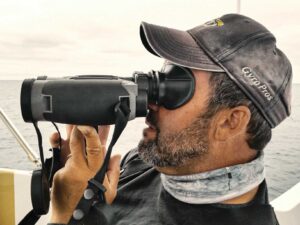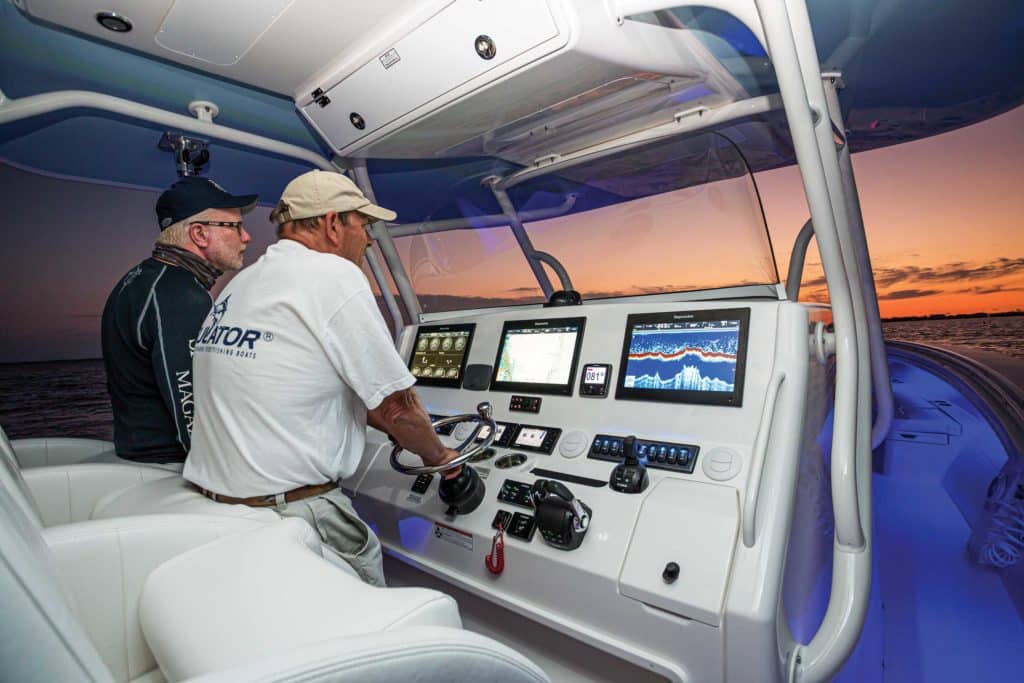
Few pieces of real estate prove more valuable on a fishing boat than the helm, especially with the growing number of electronic tools available to anglers.
Rivaled only by the value of fishing space, the helm (aka dash) serves as a vessel’s nerve center, home to controls, displays, gauges, chargers, switches and more. Yet all of these take up space, and eventually that space runs out. The smaller your helm, the more quickly this occurs.
However, with a little creative thinking, upgrades and special rigging, you can squeeze in more electronics and, in some cases, even leave room for expansion. Let’s look at seven ways to add electronics when you might think there is no room for more.
Multitask
If your boat’s helm is equipped with a combo unit with limited networking capabilities, upgrading to a multifunction display lends more functionality.
Touchscreen MFDs allow you to integrate new or additional functions, including scanning sonar, radar, autopilot, sea-surface-temperature readouts and AIS, all just by using NMEA 2000 plug-and-play cables.
MFDs come in screen sizes ranging from 9 to 24 inches to suit virtually any saltwater fishing boat, and once plugged into the NMEA 2000 network, you are able to control all the integrated functions from the MFD, negating the need for any additional displays.
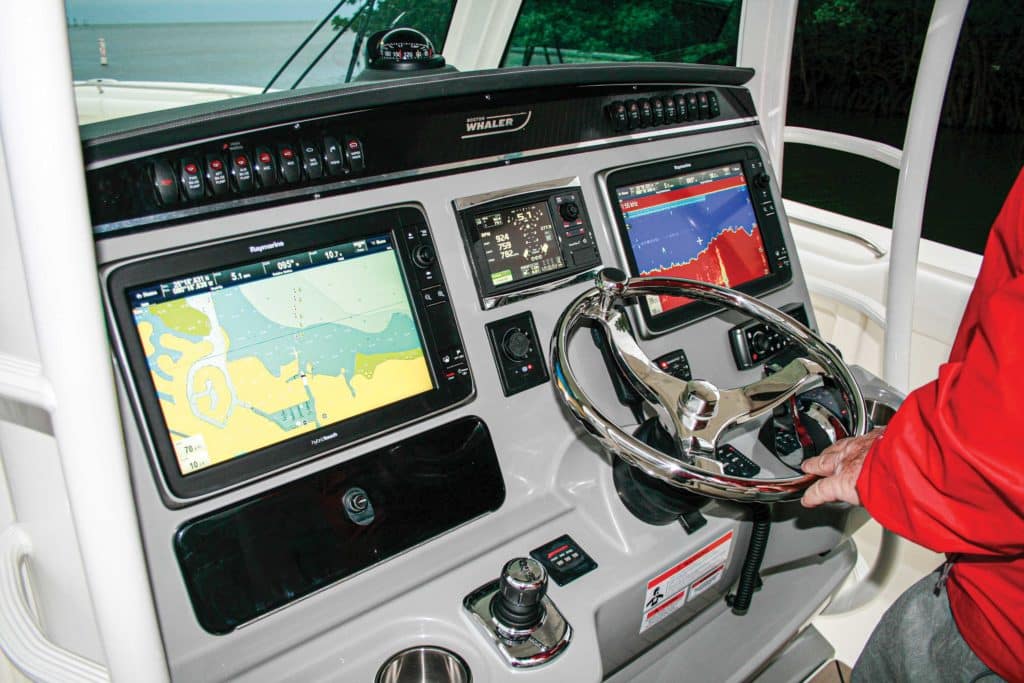
Lose the Gauges
Many engines are designed to use MFDs to display vital parameters, including rpm, cooling water pressure, engine temperature, oil pressure, voltage, trim angle and more, as well as provide alerts, from scheduled maintenance to issues such as overheating.
Again, this is made possible by an NMEA 2000 connection routed from the motor to a compatible MFD. This capability eliminates the need for a space-robbing conventional instrument cluster. No longer do you need a gauge for every specific engine function. Networking the engine consolidates all of that information in one place and frees space at the helm.
Switch Out
Switch panels for elements such as lights, pumps and other accessories also occupy valuable helm space. However, digital switching systems eliminate the need for physical switch panels. With these systems, most of the switching takes place on a touchscreen MFD.
But there is a caveat here: Upgrading to digital switching is a complex retrofit and might not be practical on some older boats. Digital switching systems are generally reserved for installations on new boats. So, if you are ordering a new boat from a factory-direct boatbuilder and you are concerned about helm space, inquire about the availability of digital switching.
Another space-saver is moving the switch panel from the helm to inside a console or cabin. This works for functions left in the “on” position for extended periods, such as livewell pumps or accessories that don’t require quick access. Switches for bilge pumps and horns should remain at the helm, where they’ll be immediately accessible.
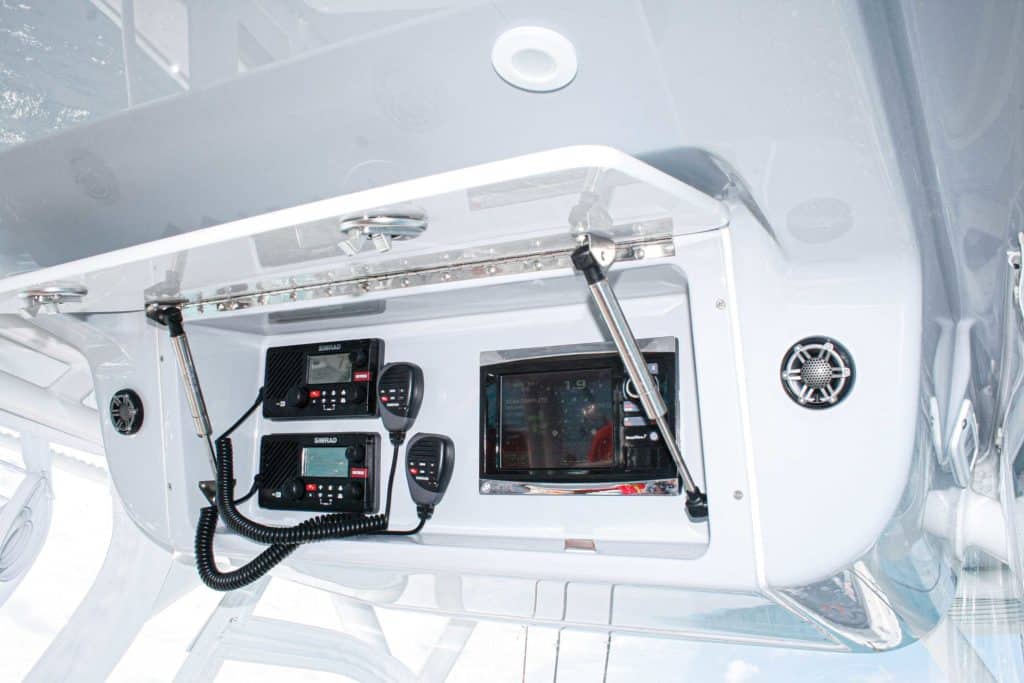
Overhead Space
If your boat has a T-top, consider adding an overhead electronics box on the underside of the top. Available from a number of companies, including Boat Outfitters, CE Smith, Fishmaster, Taylor Made and Todd, electronics boxes let you relocate VHF radios, stereo head units and even small bracket-mount displays to free up helm space for other electronics.
Prices for electronics boxes start at about $340 and are available in a choice of sizes to fit under most tops. Many feature water-resistant, upward-hinging doors. Spring-loaded mechanisms keep the door open, but make sure it can be locked when closed. DIY installation is easy on most T-tops and hardtops.
Black-Box It
Not all electronics need helm displays. For example, the Vesper Cortex V1P VHF (starting at $1,898) relies on a black-box installed out of sight, often behind the helm, and wirelessly connected to a handset. The system incorporates a GPS and AIS transponder that connects via NMEA 2000 to other onboard electronics. Vessel monitoring and control capabilities, as well as real-time weather information, are available via a cellular connection to a smartphone.
Some audio systems forgo displays as well. An example is the Fusion BB100 Black Box marine stereo ($299.99), which uses a small wired, waterproof remote to control the music, but you can also use a smartphone to select tunes from your playlist and control other functions, such as the volume of the Bluetooth-enabled system.
Mount Up
Most anglers think in terms of bracket- or flush-mounting electronics displays. But there are other ways to add a display that require minimal helm space. Ram Mounts offers a pedestal-mounting solution, using a ball-and-socket system for easy viewing-angle adjustments.
Ram Mounts’ bolt-on pedestal bases occupy just a 2½-inch-diameter footprint. Special plates let you bolt the display bracket atop the pedestal arm, which is available in 3- and 6-inch lengths, with extensions and swivel arms available as well. There are also mounting adapters for mobile devices.
Ride the Rail
If there is a rail close to your helm, you might be able to add a display using one of many rail-mounting solutions available today from brands such as Edson, Ram, ScanStrut, SeaView and West Marine.
One of the beefiest of such mounting systems is the Edson ball-shaped clamp-on rail mount ($127). It fits 1-, 1 1/8- and 1 1/4-inch-diameter rails, and is available with 3- or 5-inch-wide high-density polyethylene mounting bases for attaching a display bracket.
Edson’s rail-mounting system is also designed to attach to the company’s Vision Series instrument housings (starting at $383), which allow for flush-mounting marine electronics displays.
New Electronics
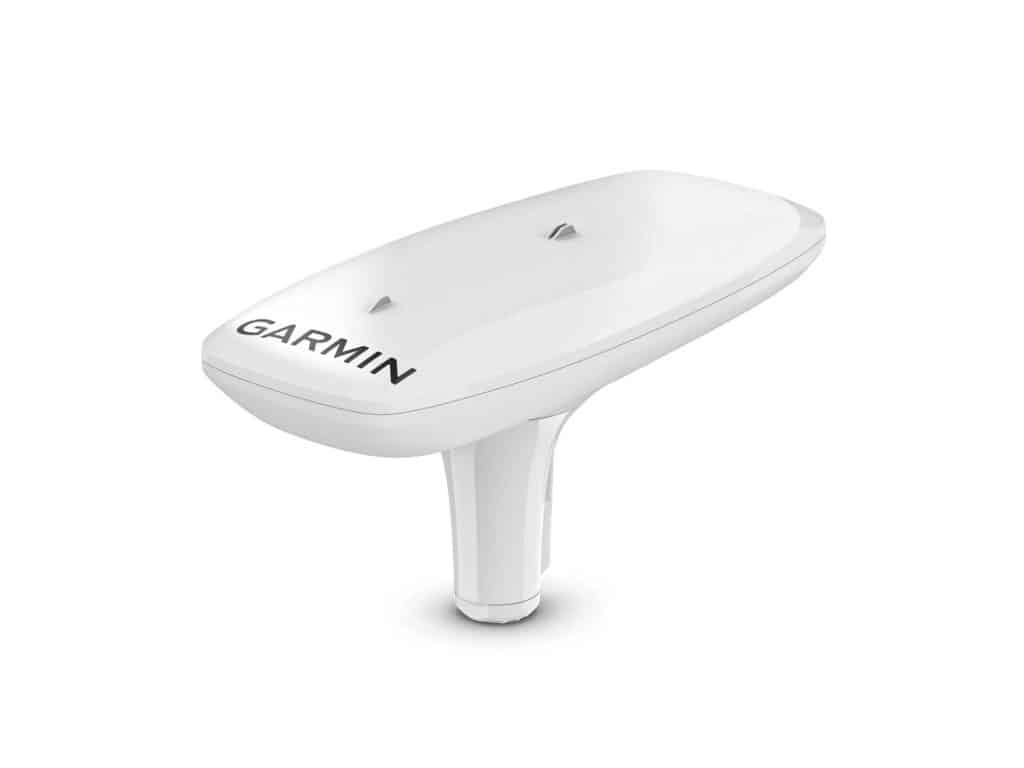
The MSC 10 marine satellite compass from Garmin integrates GNSS and attitude and heading sensors for GPS-derived data void of magnetic interference. It can be used as the primary compass for multiple systems via NMEA 2000 networking and is compatible with a wide range of Garmin chart plotters. It also delivers pitch, roll and heave information to vital instruments, such as the autopilot. $1,099.99; garmin.com
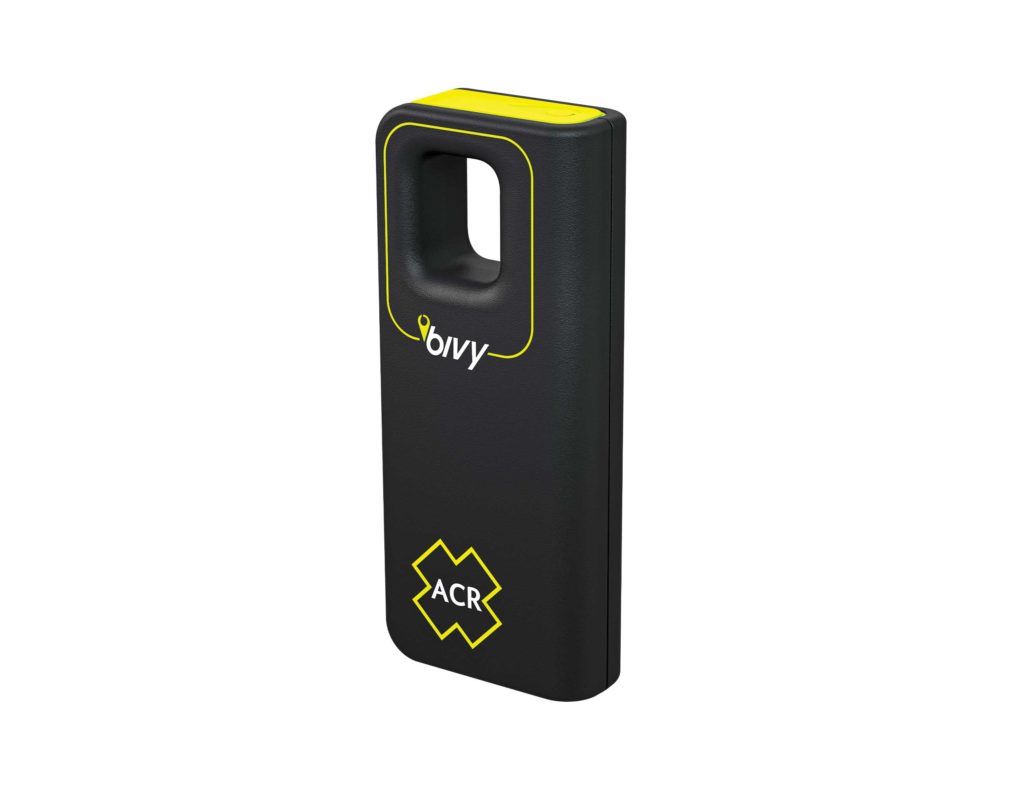
The ACR Bivy Stick satellite messenger and app offer SMS messaging, tracking and location sharing, chart access, weather and distress calling. The 4-inch device weighs 3 ounces and works with a smartphone anywhere with a view of the sky, using the high-power antenna for reliable connectivity. It contacts rescue services with an SOS button or via the app. $349.95 plus $49.99 monthly subscription; acrartex.com
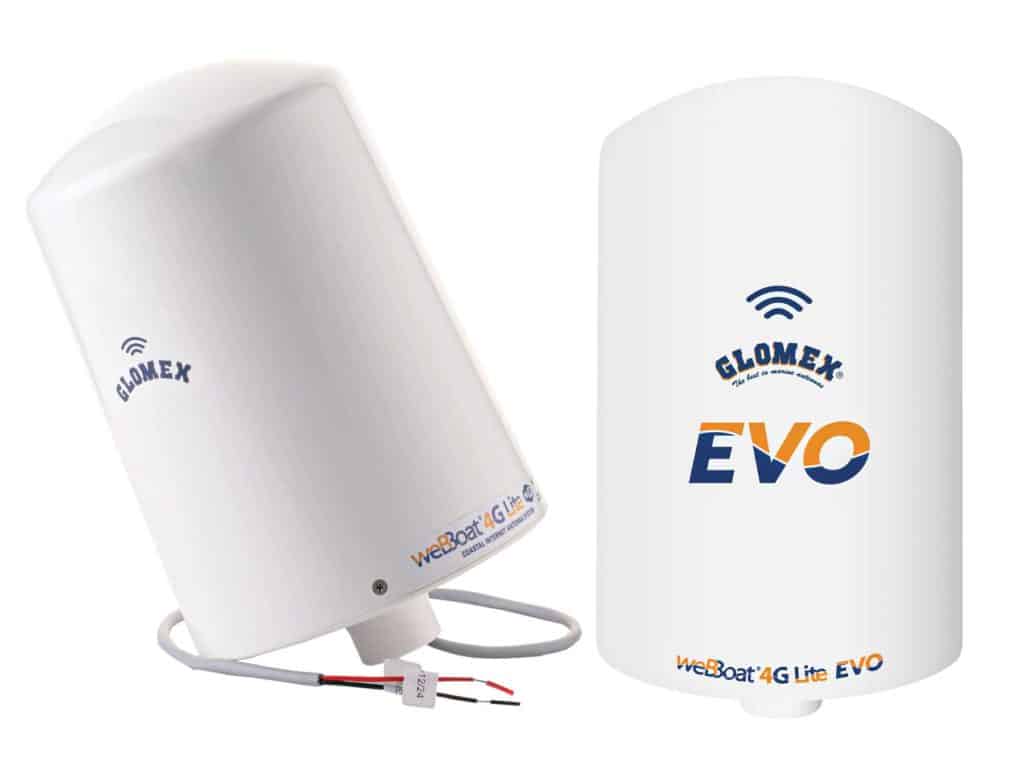
The compact Glomex weBBoat 4G Live EVO 8-by-5-inch-diameter dome provides internet connectivity up to 15 miles from shore, making it ideal for smaller boats with limited space. Two 4G/3G antennas, one Wi-Fi antenna and an integrated 3G/4G/Wi-Fi router allow up to 24 devices to be used simultaneously. It automatically switches from cellular data to a Wi-Fi signal, such as at a marina. $619; glomex.us

